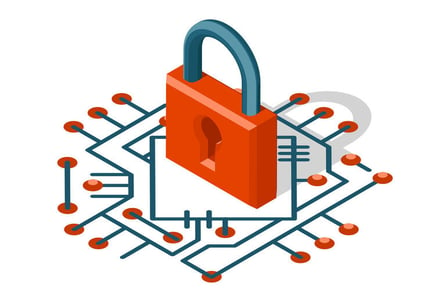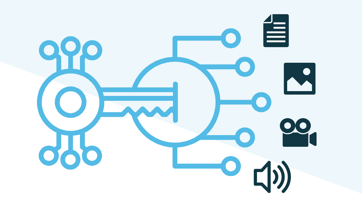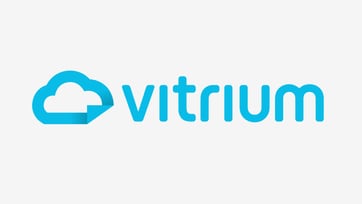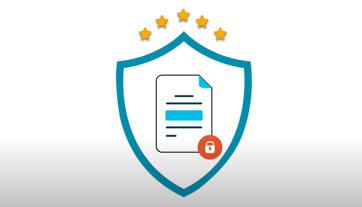Easily protect your content with a straightforward and effective DRM strategy
How to Protect PDF files: Exploring Different Methods
The protection of sensitive documents is extremely important. Whether it's confidential reports, proprietary information, or intellectual property, safeguarding PDFs from unauthorized access and distribution is a critical concern for businesses, researchers, and individuals alike. Fortunately, there are several methods available to enhance the security of PDF documents. In this post, we'll delve into some of the ways you can protect your PDFs, with a focus on the utilization of Digital Rights Management (DRM) software as the most effective method to protect PDF files.
Why Protect PDFs?
Before delving into the different ways to protect a PDF, let's first understand why protecting PDF files is crucial. PDF (Portable Document Format) is a widely used file format for sharing and distributing documents. PDFs often contain sensitive information, such as financial reports, legal documents, intellectual property, and more. Without proper protection, these files are vulnerable to unauthorized access, copying, and distribution. Protect with DRM software PDFs to:
-
Prevent Unauthorized Access: Ensure only authorized users have access to valuable information.
-
Protect Intellectual Property: Safeguard your intellectual property. Prevent unauthorized reproduction, distribution, and modification.
-
Control Content Distribution: Control how your PDFs are distributed. Manage the distribution of your content.
-
Capitalize on Monetization Opportunities: By securely delivering premium content, businesses can implement subscription models, pay-per-view options, or other revenue-generating strategies without the fear of widespread piracy.

Protect PDF With Passwords:
One of the most basic yet popular methods for securing PDF documents is through password protection. By encrypting the file with a password, only individuals with the correct credentials can access its contents. When implementing password protection, it's essential to use strong, unique passwords and refrain from sharing them insecurely.
This method, however, does not prevent individuals from sharing credentials with others, does not protect the file from screen capture techniques, and does not prevent printing or copying. Overall, it simply asks whoever wants to access the file to provide the necessary credentials, meaning anybody that has the password will be able to access it. Content, then, is not entirely secured.
Protect PDF With Watermarks:
Watermarking involves overlaying visible or invisible markings onto a PDF document to deter unauthorized sharing or distribution. Visible watermarks often contain copyright information or a "Confidential" label, while invisible watermarks embed unique identifiers into the document, allowing for tracking if the file is leaked.
Adding watermarks to PDF files is a great way to claim authorship over digital content, and it can help deter people from copying or sharing PDFs. However, this does not prevent unauthorized users from accessing and viewing the PDF files you want to protect. Although a useful resource, a watermark by itself is not a thorough method to protect a PDF. Even if the file is watermarked, users might still share it with others, and files might still be leaked.

Protect PDF With Encryption:
Encryption is the process of encoding data in such a way that only authorized parties can access it. PDF encryption can be achieved through various encryption algorithms, such as AES (Advanced Encryption Standard), which ensures that even if the file is intercepted, its contents remain protected from prying eyes. Typically, the data in an encrypted file is scrambled by the algorithm that is applied to it. This data can be decrypted with a key, which is usually a password or passphrase.
While encryption is one of the most secure ways to keep your PDF files protected, it lacks some advanced security features that can ensure PDFs are not easily accessed, copied, or shared. As with a password, they decryption key could be shared and passed around, meaning that anybody with it could access the file.
Protect PDF With DRM:
Digital Rights Management (DRM) software offers comprehensive protection for PDF documents by controlling access, usage rights, and distribution. It is the combination of all other methods for protecting PDFs and, therefore, it is the most complete. DRM solutions encrypt digital content, like PDFs, and enable content owners to enforce policies such as limiting the number of views, printing, copying, or sharing of PDFs. Additionally, DRM software often includes features like dynamic watermarking, document expiration, and integration with authentication systems, providing an additional layer of security.
Some of the benefits of choosing DRM software to protect PDFs are:
-
Granular Control: DRM software allows content owners to define specific access and usage rights for individual users or groups, ensuring that sensitive information remains secure.
-
Tracking and Reporting: DRM solutions offer detailed insights into document usage, including who accessed the file, when it was accessed, and any attempted unauthorized activities, facilitating compliance audits and security assessments.
-
Flexibility: DRM systems are highly adaptable, allowing organizations to tailor protection policies based on their unique requirements. Whether it's protecting financial reports, client contracts, or research papers, DRM software offers customizable solutions.
-
Compliance: For industries with strict regulatory requirements, such as healthcare, finance, or legal sectors, DRM software helps ensure compliance with data protection laws by preventing unauthorized access or distribution of sensitive documents.
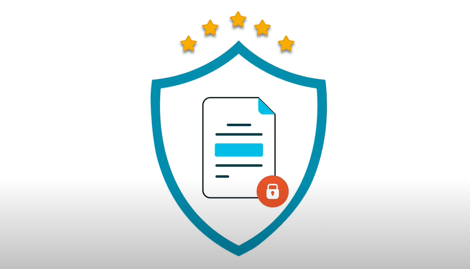
Conclusion:
In an era where digital assets are constantly at risk of unauthorized access and distribution, protecting PDF files is essential for maintaining confidentiality, integrity, and trust. While methods like password protection, watermarking, and encryption provide fundamental security measures, the implementation of DRM software offers advanced capabilities for comprehensive PDF protection. By leveraging DRM solutions, organizations and individuals can confidently safeguard their valuable content from unauthorized access, sharing, and piracy, thereby safeguarding their intellectual property and maintaining confidentiality.
